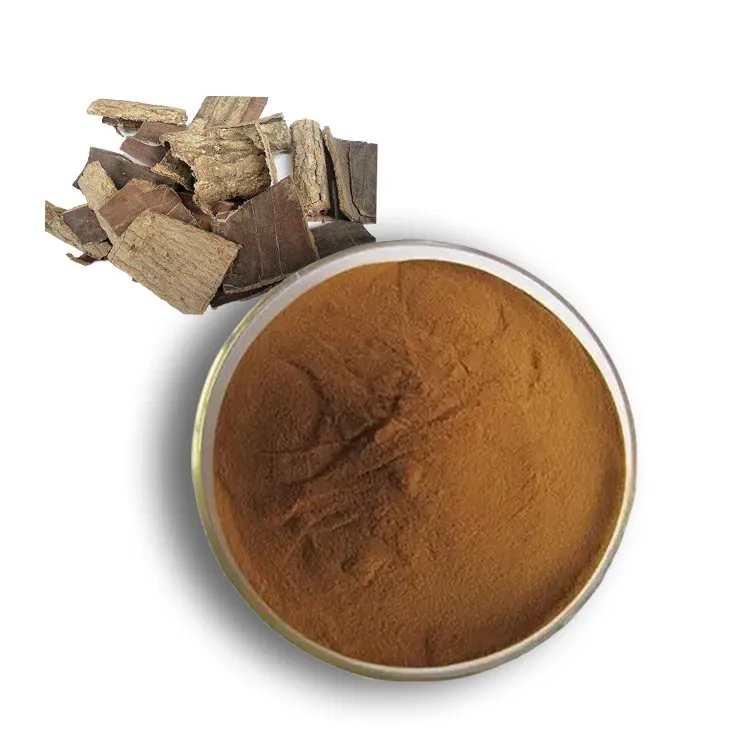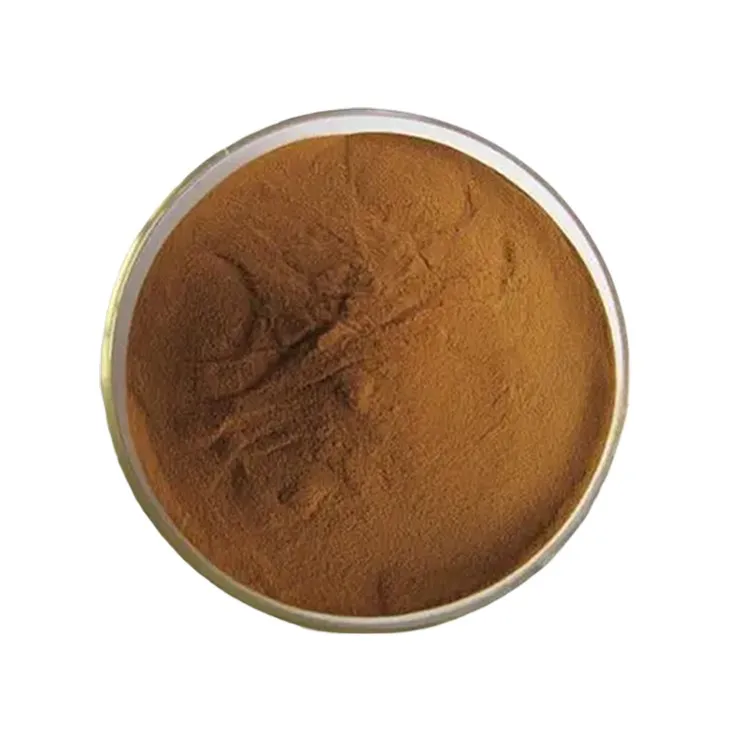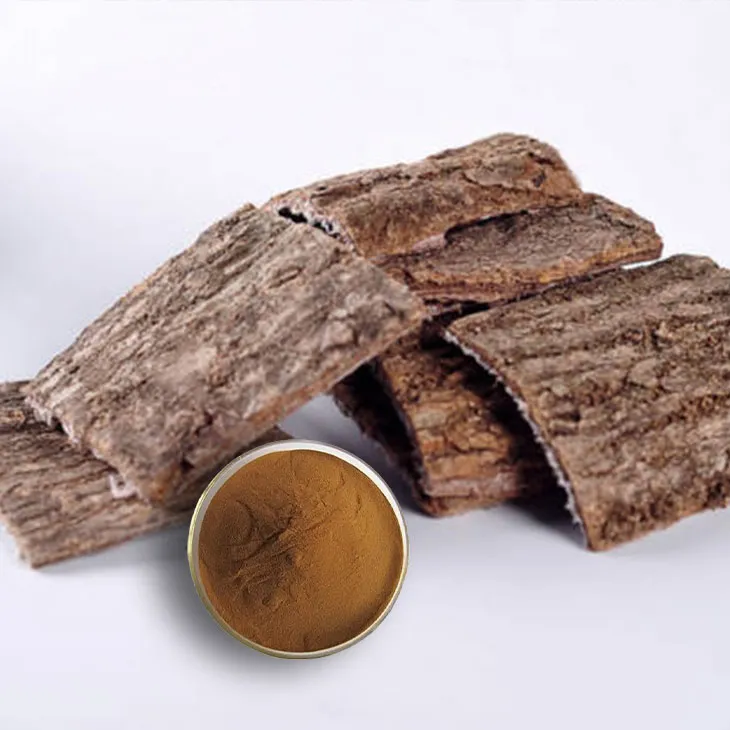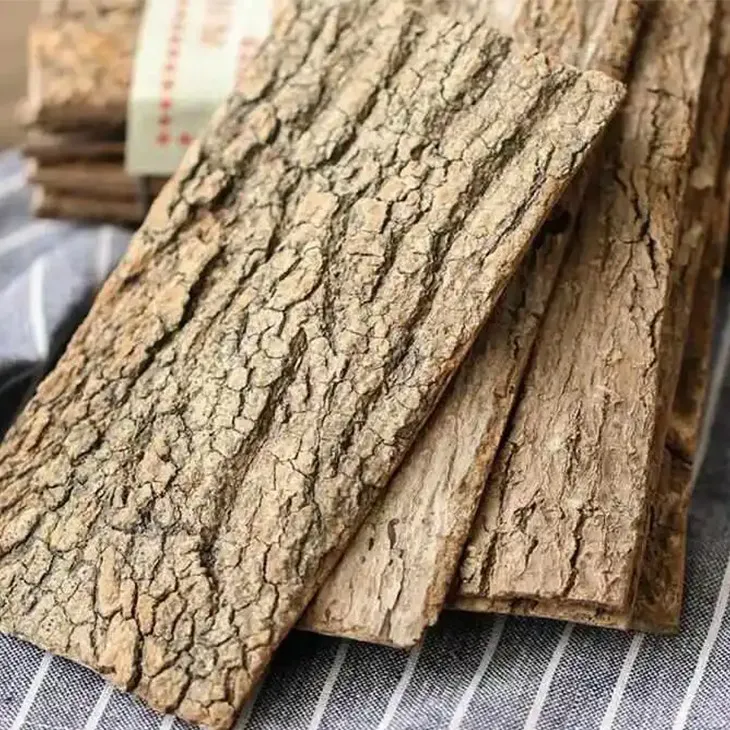- 0086-571-85302990
- sales@greenskybio.com
Supercritical Carbon Dioxide Extraction of Eucommia ulmoides Extracts.
2024-11-26

1. Introduction
Eucommia ulmoides is a plant with high economic value. It has been used in traditional Chinese medicine for a long time. The plant contains a variety of active components such as flavonoids, iridoids, lignans, and polysaccharides. These components have various biological activities, including antioxidant, anti - inflammatory, anti - hypertensive, and hypoglycemic effects. Therefore, the extraction of Eucommia Ulmoides Extract is of great significance for its utilization in different fields.
Traditional extraction methods, such as solvent extraction and steam distillation, have some limitations. For example, solvent extraction may leave solvent residues, and steam distillation may cause the degradation of some heat - sensitive components. Supercritical carbon dioxide (CO₂) extraction technology has emerged as a promising alternative in recent years.

2. Supercritical CO₂ Extraction Technology
2.1. Properties of Supercritical CO₂
Carbon dioxide reaches its supercritical state when the temperature and pressure are above its critical values (critical temperature Tc = 31.1 °C and critical pressure Pc = 7.38 MPa). In the supercritical state, CO₂ has unique physical and chemical properties. It has a density similar to that of liquid, which endows it with good solubility, and at the same time, it has a viscosity similar to that of gas, which gives it excellent diffusivity. These properties enable supercritical CO₂ to penetrate into the matrix of Eucommia ulmoides effectively and dissolve the target compounds.
2.2. Advantages of Supercritical CO₂ Extraction
- High selectivity: Supercritical CO₂ can be adjusted by changing the extraction conditions (such as temperature, pressure, and the addition of modifiers) to selectively extract specific components from Eucommia ulmoides. For example, by adjusting the pressure, it is possible to preferentially extract flavonoids while minimizing the extraction of other components.
- Environment - friendly: CO₂ is a non - toxic, non - flammable, and inexpensive gas. After the extraction process, it can be easily recovered and recycled, reducing environmental pollution. Compared with traditional organic solvents, supercritical CO₂ extraction does not leave harmful solvent residues in the extract.
- Mild extraction conditions: The extraction process is carried out at relatively low temperatures, which is beneficial for the extraction of heat - sensitive components in Eucommia ulmoides. This can ensure the integrity of the active components and their biological activities.

3. Factors Affecting Supercritical CO₂ Extraction of Eucommia Ulmoides Extracts
3.1. Pressure
Pressure is one of the most important factors affecting the extraction efficiency. As the pressure increases, the density of supercritical CO₂ increases, and its solubility for the target compounds in Eucommia ulmoides also increases. However, excessive pressure may also lead to the extraction of some unwanted components. For example, at very high pressures, some impurities may be co - extracted with the active components. Therefore, it is necessary to optimize the pressure to achieve the best extraction results.
3.2. Temperature
Temperature also has a significant impact on the extraction process. An increase in temperature can enhance the diffusivity of supercritical CO₂, but it may also reduce its density and solubility. In the case of Eucommia Ulmoides Extraction, a proper temperature range needs to be determined. If the temperature is too low, the extraction efficiency may be low; if it is too high, the stability of some active components may be affected. A balance needs to be struck between extraction efficiency and component stability.
3.3. Extraction Time
The extraction time affects the yield of the Eucommia ulmoides extract. Initially, as the extraction time increases, the yield of the extract also increases. However, after a certain period of time, the increase in yield becomes marginal. Prolonged extraction time may also lead to the extraction of more impurities. Therefore, an appropriate extraction time should be selected to ensure high - quality extracts with reasonable yields.
3.4. The Use of Modifiers
Sometimes, modifiers are added to supercritical CO₂ to improve its solubility for certain components. In the extraction of Eucommia ulmoides, ethanol is often used as a modifier. The addition of ethanol can increase the polarity of supercritical CO₂, making it more suitable for the extraction of polar components in Eucommia ulmoides, such as flavonoids and polysaccharides. However, the amount of modifier needs to be carefully controlled, as excessive modifier may change the properties of supercritical CO₂ too much and affect the selectivity of the extraction process.

4. The Extraction Process of Eucommia ulmoides Extracts Using Supercritical CO₂
- Sample preparation: First, the Eucommia ulmoides raw materials need to be dried, ground into a suitable particle size. This can increase the contact area between the raw materials and supercritical CO₂, facilitating the extraction process.
- Loading into the extraction vessel: The prepared Eucommia ulmoides samples are loaded into the extraction vessel. The extraction vessel should be designed to withstand the high pressure and temperature required for supercritical CO₂ extraction.
- Adjusting extraction conditions: Set the appropriate pressure, temperature, extraction time, and determine whether to add modifiers and the amount of modifiers according to the characteristics of the target components and previous experimental results.
- Extraction process: Supercritical CO₂ is pumped into the extraction vessel. Under the set conditions, it penetrates into the Eucommia ulmoides samples, dissolves the target components, and then the extract - laden CO₂ is transferred to the separation vessel.
- Separation and collection: In the separation vessel, by adjusting the pressure and temperature, the solubility of supercritical CO₂ decreases, and the extract is separated from CO₂. CO₂ can be recycled for further use, and the Eucommia ulmoides extract is collected.

5. Analysis and Characterization of Eucommia ulmoides Extracts Obtained by Supercritical CO₂ Extraction
5.1. Chemical Composition Analysis
Various analytical techniques can be used to determine the chemical composition of the Eucommia ulmoides extracts. High - performance liquid chromatography (HPLC) is often used to analyze flavonoids and other phenolic compounds. Gas chromatography - mass spectrometry (GC - MS) can be used to analyze volatile components. Fourier - transform infrared spectroscopy (FT - IR) can provide information about the functional groups present in the extract. By analyzing the chemical composition, we can better understand the quality and potential applications of the extract.
5.2. Biological Activity Evaluation
- Antioxidant activity: The antioxidant activity of the Eucommia ulmoides extract can be evaluated by methods such as DPPH (2, 2 - diphenyl - 1 - picrylhydrazyl) radical scavenging assay, ABTS (2, 2' - azinobis - (3 - ethylbenzothiazoline - 6 - sulfonic acid)) radical scavenging assay. A high antioxidant activity indicates that the extract may have potential applications in the prevention of oxidative - related diseases.
- Anti - inflammatory activity: In vitro cell models or in vivo animal models can be used to evaluate the anti - inflammatory activity of the extract. For example, by observing the inhibition of inflammatory cytokines in lipopolysaccharide - stimulated macrophages, we can assess the anti - inflammatory potential of the extract.
- Anti - hypertensive and hypoglycemic activities: Animal models with hypertension or diabetes can be used to study the effects of the Eucommia ulmoides extract on blood pressure and blood glucose levels. These activities are related to the potential use of the extract in the treatment of hypertension and diabetes.
6. Applications of Eucommia ulmoides Extracts Obtained by Supercritical CO₂ Extraction
6.1. Pharmaceutical Industry
Due to its various biological activities, the Eucommia ulmoides extract can be used as a raw material for drug development. For example, its anti - hypertensive and hypoglycemic activities make it a potential candidate for the development of drugs for the treatment of hypertension and diabetes. In addition, its antioxidant and anti - inflammatory properties can also be used in the development of drugs for the treatment of related diseases. The use of supercritical CO₂ extraction can ensure the purity and quality of the extract, which is very important for pharmaceutical applications.
6.2. Food Industry
The Eucommia ulmoides extract can be added to foods as a functional ingredient. It can be used in the production of health - promoting foods, such as functional beverages, health foods, and dietary supplements. For example, its antioxidant activity can help to extend the shelf life of foods. Moreover, its nutritional value and health - promoting effects can also meet the increasing demand for healthy foods in the market. Supercritical CO₂ extraction provides a clean and safe method for obtaining food - grade Eucommia ulmoides extracts.
6.3. Cosmetics Industry
In the cosmetics industry, the Eucommia ulmoides extract can be used in skin - care products. Its antioxidant and anti - inflammatory properties can help to protect the skin from oxidative damage and inflammation, improve skin elasticity, and delay skin aging. It can be added to creams, lotions, and masks. The high - quality extract obtained by supercritical CO₂ extraction is more suitable for use in high - end cosmetics products.
7. Conclusion
Supercritical carbon dioxide extraction is an effective and sustainable method for obtaining Eucommia ulmoides extracts. It has many advantages over traditional extraction methods, such as high selectivity, environmental - friendliness, and mild extraction conditions. By optimizing the extraction factors such as pressure, temperature, extraction time, and the use of modifiers, high - quality Eucommia ulmoides extracts can be obtained. The extracts obtained by this method have a wide range of applications in the pharmaceutical, food, and cosmetics industries. In the future, further research can be carried out to explore more potential applications and improve the extraction process to make better use of this valuable plant resource.
FAQ:
What are the advantages of supercritical CO₂ extraction for Eucommia ulmoides extracts?
Supercritical CO₂ extraction has several advantages for Eucommia ulmoides extracts. In the supercritical state, carbon dioxide has good diffusivity and solubility, which can penetrate deep into the cells to dissolve and extract target compounds effectively. It is a highly efficient process. Moreover, it is more sustainable as it reduces waste and environmental pollution compared to traditional extraction processes.
What are the applications of Eucommia ulmoides extract obtained by supercritical CO₂ extraction?
The Eucommia ulmoides extract obtained through supercritical CO₂ extraction has a wide range of applications. In the pharmaceutical industry, it can be used for drug development. In the food industry, it serves as a functional ingredient. In the cosmetics industry, it is used in skin - care products because of its diverse biological activities and health - promoting properties.
How does supercritical carbon dioxide penetrate Eucommia ulmoides cells during extraction?
Carbon dioxide in the supercritical state has good diffusivity. This property allows it to penetrate deep into the cells of Eucommia ulmoides. It can then dissolve the target compounds within the cells for extraction.
What makes Eucommia ulmoides a valuable plant resource for extraction?
Eucommia ulmoides is a valuable plant resource for extraction because it contains active components. These active components have diverse biological activities and health - promoting properties, which make the extraction of its components crucial for maximizing its utilization value.
Is supercritical CO₂ extraction of Eucommia ulmoides extracts cost - effective?
Supercritical CO₂ extraction can be cost - effective in the long run. Although the initial setup cost for the supercritical extraction equipment may be relatively high, the high efficiency of the process, along with the reduced waste and potential for higher - quality extracts, can offset the costs. Also, considering the environmental benefits and the value - added products obtained from the extract, it can be considered cost - effective.
Related literature
- Supercritical Fluid Extraction of Bioactive Compounds from Eucommia ulmoides: A Review"
- "Optimization of Supercritical Carbon Dioxide Extraction of Eucommia ulmoides Oliv. Bark"
- "Supercritical CO₂ Extraction of Eucommia ulmoides and the Antioxidant Activity of the Extract"
- ▶ Hesperidin
- ▶ Citrus Bioflavonoids
- ▶ Plant Extract
- ▶ lycopene
- ▶ Diosmin
- ▶ Grape seed extract
- ▶ Sea buckthorn Juice Powder
- ▶ Fruit Juice Powder
- ▶ Hops Extract
- ▶ Artichoke Extract
- ▶ Mushroom extract
- ▶ Astaxanthin
- ▶ Green Tea Extract
- ▶ Curcumin
- ▶ Horse Chestnut Extract
- ▶ Other Product
- ▶ Boswellia Serrata Extract
- ▶ Resveratrol
- ▶ Marigold Extract
- ▶ Grape Leaf Extract
- ▶ New Product
- ▶ Aminolevulinic acid
- ▶ Cranberry Extract
- ▶ Red Yeast Rice
- ▶ Red Wine Extract
-
Sea buckthorn Juice Powder
2024-11-26
-
Quercetin
2024-11-26
-
Marigold Extract
2024-11-26
-
Lemon Balm Extract
2024-11-26
-
Acerola Extract
2024-11-26
-
Konjac Powder
2024-11-26
-
Feverfew Extract
2024-11-26
-
Grapefruit Seed Extract Powder
2024-11-26
-
Artichoke Leaf Extract
2024-11-26
-
Dandelion Root Extract
2024-11-26





















